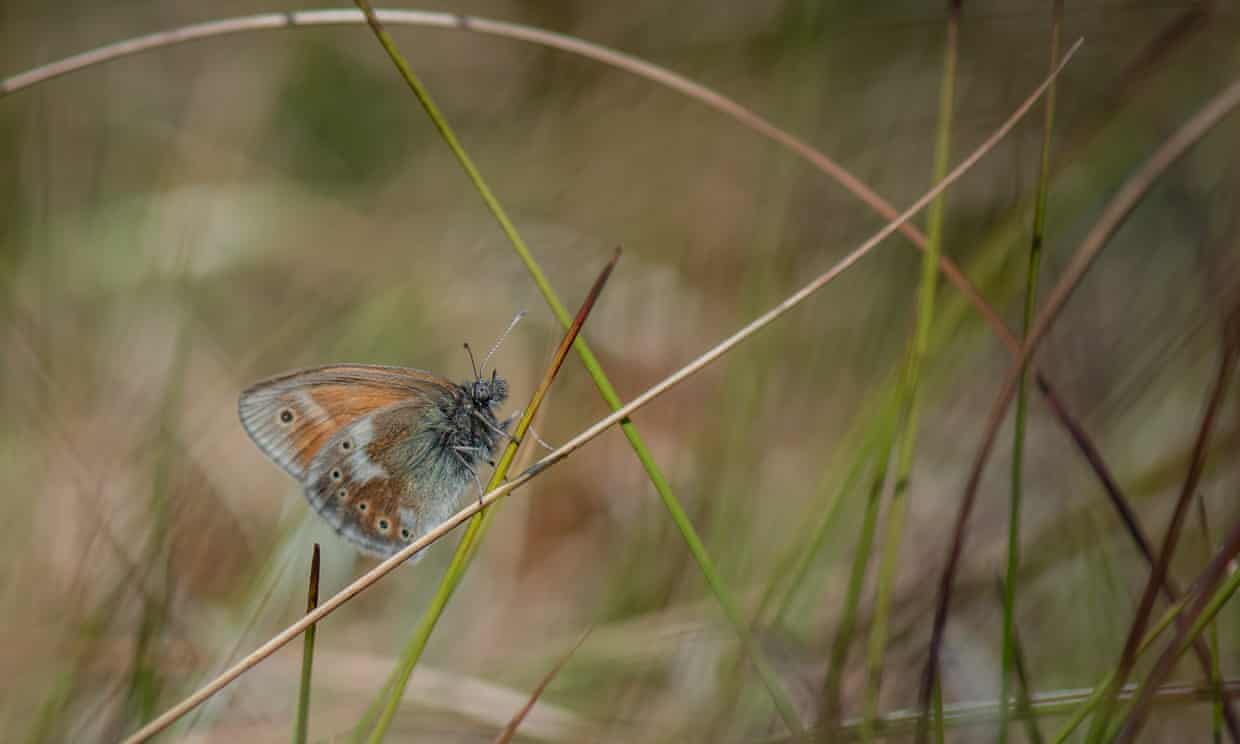
The age of extinction
Large heath butterflies return to Manchester after 150 years
Lancashire Wildlife Trust has brought the species back to peatlands following a local extinction in the 19th century
by Phoebe WestonLarge heath butterflies are returning to peatlands in greater Manchester 150 years after they went locally extinct.
The acidic peat bogs and mosslands around Manchester and Liverpool were home to the country’s biggest colonies of large heath butterflies – known as the “Manchester argus” – but numbers plummeted as land was drained for agricultural land and peat extraction.
Conservationists from Lancashire Wildlife Trust are now looking to reverse the fortunes of this rare butterfly by restoring a 37-hectare area of peatland between Wigan and Salford where they have recreated habitats of sphagnum moss, cross-leaved heath and hare’s-tail cottongrass on which the butterflies depend.
Last summer, staff collected six female butterflies from a population at Winmarleigh moss near Garstang and took them to Chester zoo. The caterpillars spent winter feeding on cotton grass and 45 hand-reared pupae are now being released on to a secret site where they will be kept in protected tents while they emerge from their pupae.
Conservationists are going into the tent to check them two or three times a day, releasing any butterflies as they emerge.
Heather Prince, who is part of Chester zoo’s invertebrate team, said: “Breeding and rearing butterflies in an incredibly delicate process that requires a fine balance of conditions at each part of their life cycle. Countless hours have been spent inside our specialised breeding centre nurturing the tiny eggs, rearing the larvae and caring for their host plants as well as monitoring their final pupation period.
“It will be incredibly rewarding to see large heath butterflies fluttering around in their new home – a place where they’ve been missing for more than 100 years – and know that we’ve contributed to preventing their extinction in this area.”
The butterflies rarely fly more than 650m from where they are born so were unlikely to colonise the area alone. Alan Wright, communications manager at the Wildlife Trust for Lancashire, Manchester and North Merseyside, says he hopes there will be a good colony here in the next 10 years.
He said: “In Victorian times there were literally thousands of these butterflies in the mossy areas around Manchester. This reintroduction part of a wider effort to get native wildlife back in the right areas … It just seemed right that if we could get Manchester’s butterfly back to the mosses that’s something we should do. Everyone here is absolutely over the moon about this.”
Peat extraction means these boggy areas are up to 20 feet lower than they were a century ago and this reintroduction is part of a bigger project to restore greater Manchester’s heavily degraded wetlands. Other species set to be reintroduced include bog bush cricket, white-faced darter dragonfly and carnivorous sundew.
The 2019 State of Nature report found 41% of UK butterfly species had declined with one in 10 at risk of extinction. Jo Kennedy, a project coordinator at Lancashire Wildlife Trust, said: “Across our region we have lost 98% of our lowland raised bogs, creating a huge hole in our biodiversity. To function as a healthy ecosystem, we need a tapestry of different and connected habitats each supporting a variety of plants and animals.”
There are a few isolated populations of large heath butterflies remaining in England and Wales and larger populations in Scotland.
This follows the successful reintroduction of large heath butterflies to Heysham Moss in Lancashire between 2014 and 2016, and conservationists are now planning to reintroduce the butterflies to Risley Moss in Cheshire.